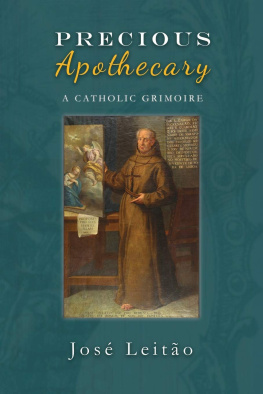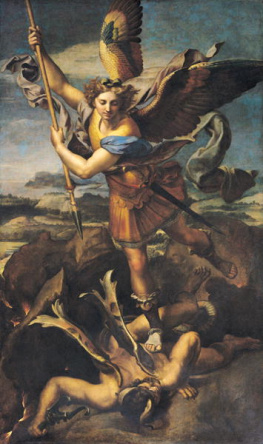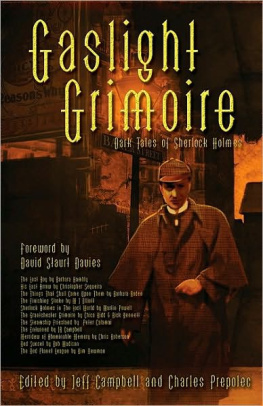Jose Leitao - Precious Apothecary: A Catholic Grimoire
Here you can read online Jose Leitao - Precious Apothecary: A Catholic Grimoire full text of the book (entire story) in english for free. Download pdf and epub, get meaning, cover and reviews about this ebook. year: 2021, publisher: Avalonia, genre: Religion. Description of the work, (preface) as well as reviews are available. Best literature library LitArk.com created for fans of good reading and offers a wide selection of genres:
Romance novel
Science fiction
Adventure
Detective
Science
History
Home and family
Prose
Art
Politics
Computer
Non-fiction
Religion
Business
Children
Humor
Choose a favorite category and find really read worthwhile books. Enjoy immersion in the world of imagination, feel the emotions of the characters or learn something new for yourself, make an fascinating discovery.
- Book:Precious Apothecary: A Catholic Grimoire
- Author:
- Publisher:Avalonia
- Genre:
- Year:2021
- Rating:3 / 5
- Favourites:Add to favourites
- Your mark:
- 60
- 1
- 2
- 3
- 4
- 5
Precious Apothecary: A Catholic Grimoire: summary, description and annotation
We offer to read an annotation, description, summary or preface (depends on what the author of the book "Precious Apothecary: A Catholic Grimoire" wrote himself). If you haven't found the necessary information about the book — write in the comments, we will try to find it.
Precious Apothecary: A Catholic Grimoire — read online for free the complete book (whole text) full work
Below is the text of the book, divided by pages. System saving the place of the last page read, allows you to conveniently read the book "Precious Apothecary: A Catholic Grimoire" online for free, without having to search again every time where you left off. Put a bookmark, and you can go to the page where you finished reading at any time.
Font size:
Interval:
Bookmark:

Precious Apothecary
A Catholic Grimoire
Compiled from the writings of ngelo Sequeira,
for
the acquisition and sustenance of Grace, the Blessing of the Virgin, the Succour of her Divine Son our Lord, and the patronage of one hundred and twenty Saints
Teaches the blessings of Holy Water, Oils, Flowers, Vestments and many other such saintly things
Jos Leito

Published by Avalonia
WWW.AVALONIABOOKS.COM
Published by Avalonia
BM Avalonia
London
WC1N 3XX
England, UK
WWW.AVALONIABOOKS.COM
Precious Apothecary: A Catholic Grimoire
Copyright Jos Leito, 2020
First edition, December 2020
This Kindle Edition, December 2020
Design by Satori
Illustrations and photographs throughout this volume as credited;
otherwise the author.
British Library Cataloguing in Publication Data. A catalogue record for this book is available from the British Library.
Every effort has been made to credit material, and to obtain permission from copyright holders for the use of their work. If you notice any error or omission please notify the publ  isher so that corrections can be incorporated into future editions of this work.
isher so that corrections can be incorporated into future editions of this work.
The information provided in this book hopes to inspire and inform. The author and publisher assumes no responsibility for the effects, or lack thereof, obtained from the practices described in this book.
All rights reserved. No part of this publication may be reproduced or utilized in any form or by any means, electronic or mechanical, including photocopying, microfilm, recording, or by any information storage and retrieval system, or used in another book, without written permission from the author, with the exception of brief quotations in reviews or articles where appropriate credit is given to the copyright holder.


Penitente Arrependido

In this work, which I put to print, I expose to all the faithful a collection of spiritual goods, an apothecary filled with remedies, which all may achieve with no more cost or expense than that of devotion.
- ngelo Sequeira, Prologue, in Botica Preciosa .
The claim of universality by the Catholic Church at times obfuscates the specificities of its particular expressions. While such has been long admitted and known regarding folk aspects of religious practice, such observations often seem to border on implicit paternalism and a certain intellectual disregard of such peoples and their practices as inferior or ignorant in light of true and pure religious observance (this being the actual meaning of the word syncretism). However, this same variability of Catholic practice needs to be equally realized of the upper echelons of the Catholic intellectual establishment.
The Council of Vatican II has, in part, contributed to this general ignorance of Church specificity by offering a new and renovated self-constructed vision of this institution as an ecumenical trans-cultural body. This is not a criticism in itself, and a great deal of praise can be made regarding the new humanistic ideals of the contemporary Church, but the enforcement of this novel vision has led the theologically observant faithful to become oblivious of the Catholic traditions of their forefathers. Again, this is beyond the folk aspects of Catholicism; the forefathers we speak of are the men of the cloth who sustained the Church in all corners of the world as it assumed various particular and unique expressions of a single ideal and cosmological vision. The capacity for centralization and the mechanisms for quick communication which the past century has offered is leading many to gradually forget the local Church as an expression of personal and unique religious sensitivity and experience.
The results of this are numerous and nuanced, but among them is the noted lack of focus on the local Saint as a living participant in religious practice and observance. Saints were often the focal point of local Catholicism; their bones were quite literally what the Altar was built upon. Saints were the centre and protector of the community, the example to be followed, and the theological weapon for church, convent, monastery and sanctuary power struggles which allowed for the establishment of local authority, constellations of pilgrimage sites, miracle narratives or the flow of devotion. By the control of relics, publication of hagiographies, miracle and cure propaganda, the specificity of the local grew from the fall of the classical world onwards, across medieval, modern and contemporary times, creating the only human way any church could hope to be Universal: by becoming infinitely local.
Still, specificity within the Church hasnt been lost, and novel groups, lay associations and orders do in fact exist, and increasingly so, each with its own rites and patrons. But such, given birth from within the current Church, seem to borrow more from Reformation ideals than ancestry and locality acknowledgement. Once again, this is likely to be an unfair criticism (if it is indeed criticism), since the Church as a living body existent in the present, and led by one single Shepherd (the Pope) as an actuation and representative of Peter, is meant for change. Consequently, such flavourless and colourless changes still need to be acknowledged as legitimate and spiritually valid even if boring.
Importantly, traditionalists seem to miss the point that the Pope has authority to go against tradition, and if you dont accept the legitimacy of papal innovation then you are not really Catholic, but rather a heretic whose heresy has not been made manifest for lack of opportunity. The search for ideal traditionalism is equally destructive since traditionalism is not constructed on a base of living organic creation, but rather erosion. Traditionalism encysts practice on a strict adherence to a particular circumstantial orthodoxy, and personal and particular expression become a danger to be combated. Speaking Latin does not make you more interesting, just a different shade of bore.
Between progressives and conservatives, modernists and traditionalists, rightfully or not the Church that once was is indeed being forgotten, because that Church of bones and dirt is problematic to both sides of the trench. If we start turning back the clock on that which is today called the Catholic Church, even if we are not wanting to fall outside its orthodoxy, we will thus be able to find shades of unusual colour. By focusing on any one environment, and tracking its visible literary outputs, lines of unique tradition thus become visible. Based on cornerstones of long-standing local practices, often put in place by the necessities of Christianization or missionary work, unique lines of ideas, expositions and religious work and conceptualization take body and form. Such is valid for any environment, creating numerous forms of Catholic expression organized along regional, national and cultural lines, each distinct and somehow, mysteriously, part of the same cosmological universe.
Font size:
Interval:
Bookmark:
Similar books «Precious Apothecary: A Catholic Grimoire»
Look at similar books to Precious Apothecary: A Catholic Grimoire. We have selected literature similar in name and meaning in the hope of providing readers with more options to find new, interesting, not yet read works.
Discussion, reviews of the book Precious Apothecary: A Catholic Grimoire and just readers' own opinions. Leave your comments, write what you think about the work, its meaning or the main characters. Specify what exactly you liked and what you didn't like, and why you think so.













